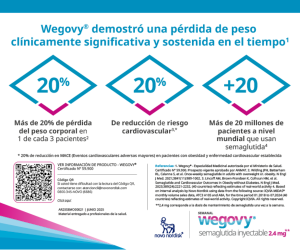Diabetic kidney disease in pediatric patients
DOI:
https://doi.org/10.47196/diab.v51i3.112Keywords:
pediatric population, kidney disease, albuminuria, obesity, type 1 diabetes, type 2 diabetesAbstract
Albuminuria is an early marker of the kidney disease, its diagnosis is defined when the range of albumin/creatinine is greater than 30 mg/g and persists in at least two or three determinations like in the adult population. The conclusions of various pediatric studies are contradictory, some find associations between obesity, cardiovascular risk factors and albuminuria and others not. It is suggested that urinary albumin excretion may be increased in children with normal weight vs obese children, likely caused by increased physical activity in children with normal weight compared with obese children. A study in adolescents with type 2 diabetes, observed that those presenting albuminuria, developed kidney insufficiency in the early adulthood. In type 1 diabetes, screening is recommended for microalbuminuria annually after 10 years old or at 5 years from the onset of disease and in type 2 diabetes at the moment of diagnosis.
References
Cignarelli M, Lamacchia O. Obesity and kidney disease. Nutr Metab Cardiovasc Dis. 2007; 17(10):757-62.
Csernus K, Lanyi E, Erhardt E, et al. Effect of childhood obesity and obesity-related cardiovascular risk factors on glomerular and tubular protein excretion. Eur J Pediatr 2005; 164(1):44-49.
Invitti C, Maffeis C, Gilardini L, et al. Metabolic syndrome in OB Caucasian children: prevalence using WHO-derived criteria and association with nontraditional cardiovascular risk factors. Int J Obes (Lond) 2006; 30:627-633.
Nguyen S, McCulloch C, Brakeman P, et al. Being overweight modifies the association between cardiovascular risk factors and microalbuminuria in adolescents. Pediatrics 2008; 121(1):37-45.
Hirschler V, Molinari C, Maccallini G, Aranda C. Is albuminuria associated with obesity in school children? Pediatr Diabetes 2010; 11(5):322-30.
Redondo MJ, Foster NC, Libman IM, et al. Prevalence of cardiovascular risk factors in youth with type 1 diabetes and elevated body mass index. Acta Diabetol 2016; 53(2):271-7.
Sellers EA, Blydt-Hansen TD, Dean HJ, Gibson IW, Birk PE, Ogborn M. Macroalbuminuria and renal pathology in First Nation youth with type 2 diabetes. Diabetes Care 2009; 32(5):786-90.
Bjornstad P, Maahs DM, Cherney DZ, et al. Insulin sen- sitivity is an important determinant of renal health in adolescents with type 2 diabetes. Diabetes Care 2014; 37(11):3033-9.
Dart AB, Sellers EA, Martens PJ, et al. High burden of kidney disease in youth-onset type 2 diabetes. Diabetes Care 2012; 35:1265-71.
American Diabetes Association. Standards of medical care in diabetes 2012. Diabetes Care 2012; 35 (Suppl. 1):S11-S63.
Rademacher E, Mauer M, Jacobs DR Jr, et al. Albumin excretion rate in normal adolescents: relation to insulin resistance and cardiovascular risk factors and comparisons to type 1 diabetes mellitus patients. Clin J Am Soc Nephrol 2008; 3:998-1005.
Daniels M, DuBose SN, Maahs DM, et al. Factors associated with microalbuminuria in 7,549 children and adolescents with type 1 diabetes in the T1D Exchange clinic registry. Diabetes Care 2013; 36:2639-45.
Downloads
Published
Issue
Section
License

This work is licensed under a Creative Commons Attribution-NonCommercial-NoDerivatives 4.0 International License.
Dirección Nacional de Derecho de Autor, Exp. N° 5.333.129. Instituto Nacional de la Propiedad Industrial, Marca «Revista de la Sociedad Argentina de Diabetes - Asociación Civil» N° de concesión 2.605.405 y N° de disposición 1.404/13.
La Revista de la SAD está licenciada bajo Licencia Creative Commons Atribución – No Comercial – Sin Obra Derivada 4.0 Internacional.
Por otra parte, la Revista SAD permite que los autores mantengan los derechos de autor sin restricciones.




























